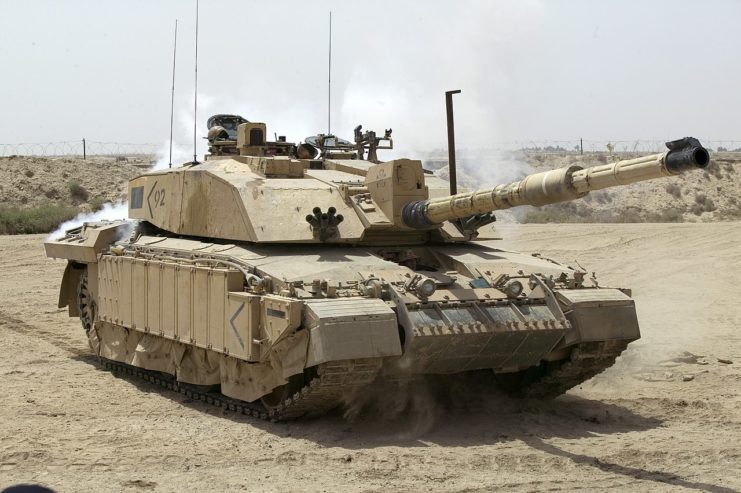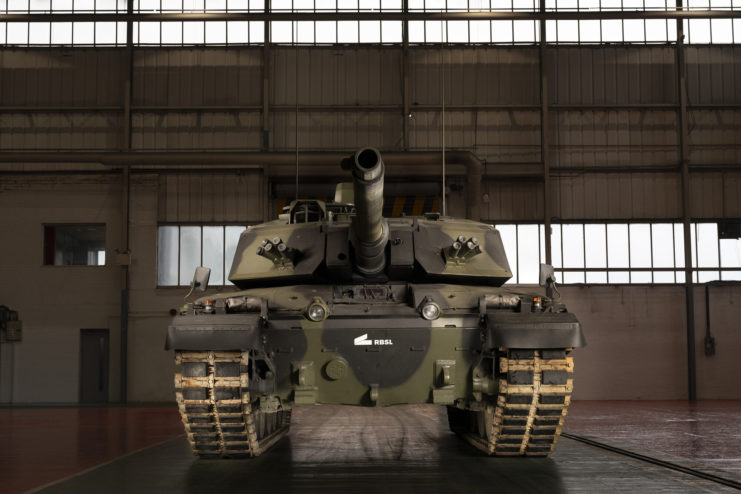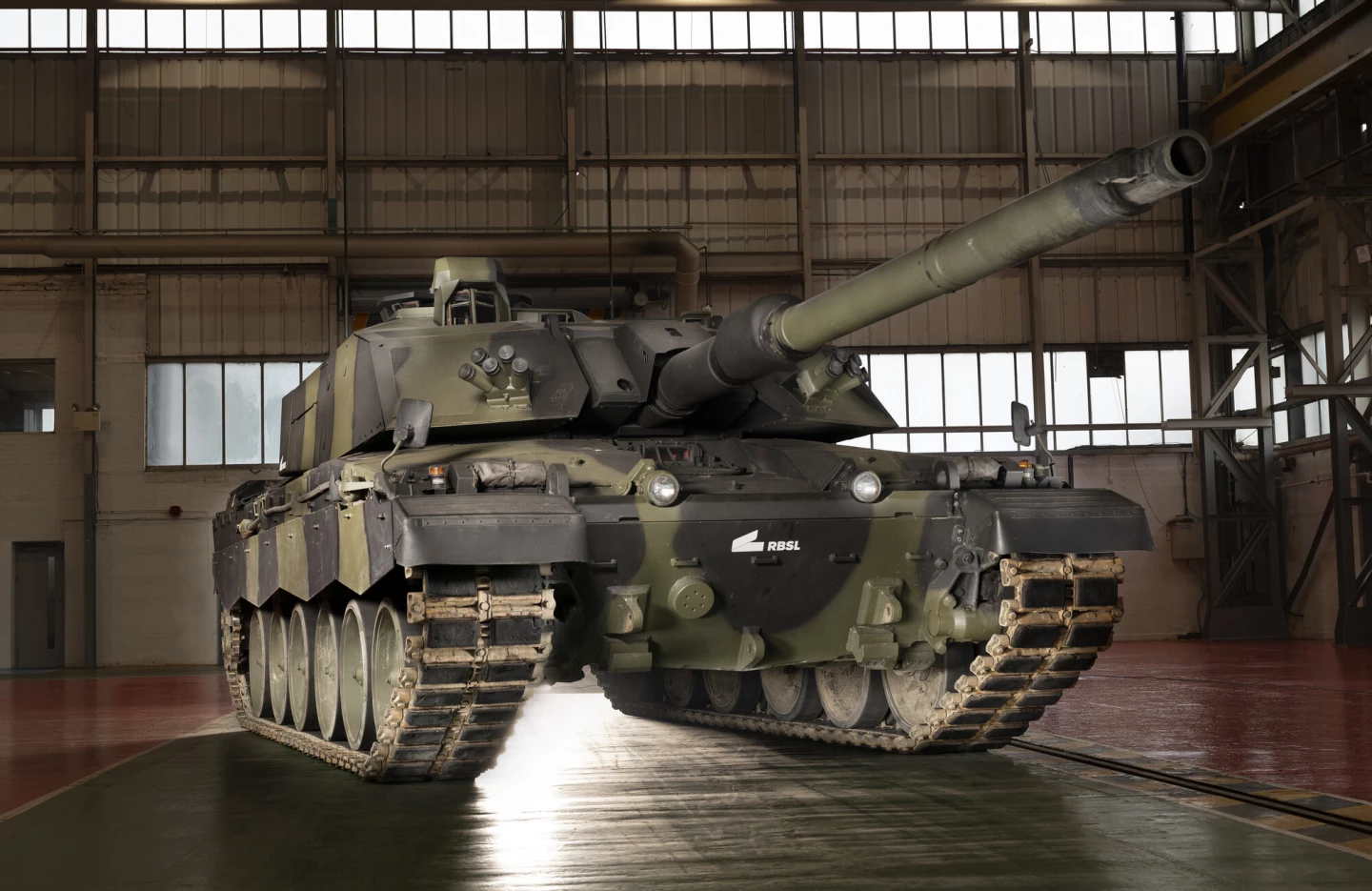The UK’s upcoming Challenger 3 main battle tank (MBT) will improve on the Challenger 2 in many ways, most notably in its armament. However, the Challenger 3 will also feature a whole host of new technology to bring it up to date with foreign designs. The new tank is expected to be one of the most capable tanks on the planet.
The Challenger family
The Challenger 3 is the latest in a line of Challenger tanks from the UK. The name dates back to a rather lackluster design from WWII, which used the same chassis as the Cromwell but carried the powerful 17-pounder anti-tank gun. The name was not used again until 1983 with the Challenger 1 MBT, which replaced the Chieftain and fought in the Gulf War. The Challenger 1 still holds the record for the longest tank-on-tank kill.
In the late 1990s, the Challenger 2 arrived. It was a major redesign and improvement over the Challenger 1, although the two are visually similar. When it entered service, the Challenger 2 was one of the most capable tanks in the world, with extremely tough Dorchester armor and a powerful 120 mm rifled L30A1 main gun.
The Challenger 2 is famous for never being knocked out by enemy fire.

Soldiers of 1 A Squadron, Queens Royal Lancers (QRL) patrolling outside Basra, Iraq onboard a Challenger 2 Main Battle Tank during Operation Telic 4. (Photo Credit: Graeme Main/MOD)
However, it has been showing its age in recent years, resulting in a number of proposed upgrades. It has received much criticism for its rifled gun.
The first improvements were discussed in 2005, with the Capability And Sustainment Program (CSP), however, it would not be until 2014 that this was taken seriously. By that point, the upgrade program was called the Challenger 2 Life Extension Program (LEP).
From the LEP came two prototypes; one from BAE Systems and another from Rheinmetall.
In 2019 BAE Systems and Rheinmetall merged their British services into Rheinmetall BAE Systems Land (RBSL) and combined their efforts into a design with a completely new turret, placed on a slightly improved Challenger 2 hull.
This would become the basis for Challenger 3.
In May 2021 the MOD signed a $1.1 billion (£800 million) contract with RBSL to upgrade 148 Challenger 2s into the new Challenger 3 specification. The upgrades should be complete by 2030.
Challenger 3

Most of the improvements that are coming with the Challenger 3 are related to the turret, which will be mated to less-modified Challenger 2 hulls. It is an entirely new design that will house the Rheinmetall L55A1 120mm smoothbore gun. This is a major departure from the previously rifled gun, but the change to this weapon is a significant one.
The older L30A1 has missed out on years of massive advancements in smoothbore ammunition. But the L55A1-armed Challenger 3 will now have access to these stocks, as well as share ammunition from other NATO members.
Inside, the tank has a vastly improved suite of electronics that will keep it connected on the battlefield. With this, different units can communicate easily and share data to improve situational awareness and give commanders the maximum amount of tools possible to make informed decisions.
Also, the Challenger 3 will be outfitted with all new sights which allow the crew to operate in the day, at night and in adverse weather.
Little is known about the changes to armor protection, which was already exceptional on the Challenger 2. However, an Army press release said the Challenger 3 will be fitted with “a new, modular armour that will defeat even the most demanding of threats.”
What this refers to exactly is unclear, but, like most of the upgrades, this new armor will likely be applied to the turret. It is currently assumed that the hull’s armor protection will remain mostly the unchanged from the Challenger 2.
One of the most interesting features of the new tank is its active protection system (APS).
Active protection system
An APS is a system that monitors the area for incoming projectiles and deploys countermeasures that either reduce a projectile’s effectiveness or destroy it completely.
According to the Army, Rafael Advanced Defense Systems Ltd’s Trophy Active Protection System will be trialed for the Challenger 3. This particular APS is widely regarded as the best in the world and has been proven in combat against a range of projectiles. Israel has used Trophy APS on their Merkava MBT since 2010, with great results.
The system complements the physical protection of a vehicle by detecting an incoming threat and deploying a small explosive to destroy it. Rafael explains it as “a neutralization bubble around the vehicle.”
All of these attributes are sure to make the Challenger 3 a true world-leading tank, and a fearsome opponent on the battlefield.
